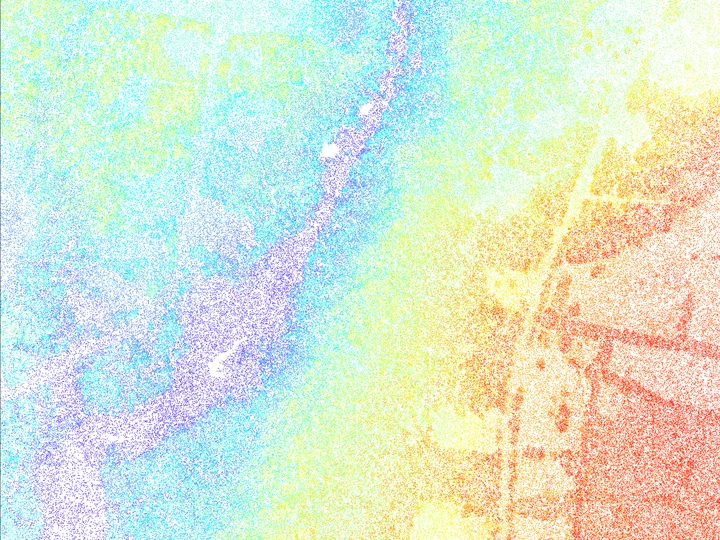Microbial Clouds and Thermal Imprints

Mariami Maghlakelidze is an Adjunct Assistant Professor at Columbia GSAPP. She is a founder of MAG Lab Design, working on the intersections of architecture, ecology, art, and material science. Her work as a researcher at the Natural Materials Lab at Columbia GSAPP focused on evidence-based scientific research in biophilic design to quantify its significant potential for health outcomes. She previously worked at WVU’s School of Design and Community Development to study the impacts of biophilic greenspaces on healthcare environments. She has participated in the European Union’s International Research “BlueHealth” as a researcher and data collector, studying the links between environment, climate, and health. Maghlakelidze’s work has been exhibited in the art galleries and published in various contemporary art and scientific journals.
Mariami received a Master’s of Science Degree from Columbia GSAPP, where she received the William Kinne Fellowship. Additionally, she holds Master’s degrees in Landscape Architecture from West Virginia University with honors and from the Estonian University of Life Science. She has received the Erasmus Mundus Fellowship from the University of Lisbon and Nordnatur Grant for the University of Copenhagen. Her teaching background includes studio and elective courses taught at the Hiller College of Architecture and Design at the New Jersey Institute of Technology and at the Bernard and Anne Spitzer School of Architecture, The City College of New York.
As Earth undergoes profound climatic and environmental transformation, the emergence of the technosphere,a vast system of large-scale, networked technologies enabling the rapid extraction and circulation of natural resources,has introduced a new and unprecedented force within the planetary system. Estimated to weigh over 30 trillion tons, the technosphere exemplifies the scale and intensity of human-induced change,standing as a defining paradigm of the Anthropocene. Its operations profoundly disrupt ecological equilibrium, contaminate life-supporting systems, and radically alter the conditions of existence across the biosphere.One of the most pervasive manifestations of this disruption is the intensification of the Urban Heat Island (UHI) effect. As urban environments expand, natural landscapes are systematically replaced by impervious surfaces, concrete, asphalt, and glass, that absorb and re-radiate heat, dramatically increasing localized warming. These materials, characterized amplify temperature disparities between urban cores and surrounding rural areas. Projections indicate urban areas could warm by 0.3°C to 0.7°C per decade, compounding the impacts of global climate change and intensifying urban heat stress.
The loss of forested areas,key regulators of carbon and local climate exacerbates this condition. Forests currently sequester around 7.6 gigatons of CO₂ annually and play a vital role in cooling through evapotranspiration and shading. Their disappearance not only undermines carbon regulation but diminishes the ecological function of urban microclimates. Urban forests, though proven to reduce land surface temperatures and filter air pollutants, remain inconsistently integrated into planning frameworks. In this context, the heat-amplifying metabolism of the technosphere collides with the fragile ecologies of the biosphere, producing atmospheric conditions, microbial clouds, thermal imprints, that demand new spatial imaginaries and climatic architectures.